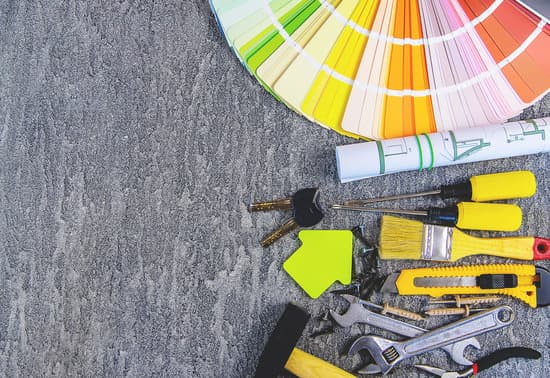When it comes to home improvements, homeowners not only aspire to enhance the comfort and aesthetics of their living spaces but also seek financial benefits. It’s essential for homeowners to be aware of the tax deductions that come with certain home improvement projects. By understanding which items are tax deductible, homeowners can maximize their savings and potentially receive a return on their investments.
Tax deductions are a way for homeowners to reduce their taxable income by deducting qualifying expenses. Knowing which home improvement items are tax deductible can be a valuable tool in reducing tax liabilities and increasing overall savings. From structural changes and renovations to energy-efficient upgrades and medical-related modifications, there are various categories of deductible home improvement expenses.
Homeowners should understand how tax deductions for home improvements work. Qualifying for tax deductions typically involves meeting certain criteria set by the Internal Revenue Service (IRS). Additionally, it is crucial to distinguish between repairs and improvements as they have different rules regarding deductibility. Having an overview of the IRS guidelines will help homeowners navigate through the process of identifying and claiming deductible home improvement expenses.
How Tax Deductions for Home Improvement Work
Understanding the Criteria for Qualifying for Tax Deductions
To take advantage of tax deductions for home improvement, it is important to understand the criteria for qualifying. The Internal Revenue Service (IRS) has specific guidelines that determine whether an expense qualifies as a tax-deductible home improvement. Generally, to qualify for a deduction, the improvement must add value to your home, prolong its useful life, or adapt it to new uses.
It’s worth noting that repairs and maintenance are typically not eligible for tax deductions unless they are done in conjunction with a larger home improvement project. For example, replacing a few shingles on your roof wouldn’t qualify as a deduction, but if you were replacing the entire roof as part of a bigger renovation, then it may be eligible.
Overview of IRS Guidelines for Deductible Home Improvement Expenses
The IRS provides guidance on deductible home improvement expenses through Publication 523: Selling Your Home. This publication outlines which expenses can be deducted and which ones cannot. Some common examples of deductible home improvement expenses include:
- Adding or extending living space: If you add square footage to your home by building an addition or converting an unused room into livable space, it may be considered a deductible home improvement.
- Upgrading systems: Improvements made to the heating, ventilation, and air conditioning (HVAC) system, electrical wiring, plumbing, or other systems can potentially be tax deductible.
- Energy-efficient upgrades: Installing energy-efficient appliances or making energy-saving improvements like adding solar panels can allow homeowners to claim deductions.
- Accessibility modifications: Home modifications made for medical purposes such as installing wheelchair ramps or widening doorways can be considered deductible expenses.
- Improving the rental property: If you own rental properties, certain improvements made to those properties can also be tax deductible.
It is crucial to keep detailed records of all expenses related to home improvements for tax purposes. This includes receipts, invoices, contracts, and any other documentation that verifies the cost and nature of the improvements.
Consulting with a Tax Professional
While it is helpful to have an understanding of tax deductions for home improvement, consulting with a tax professional is highly recommended. They can provide personalized advice based on your specific circumstances and help ensure you maximize your deductions while staying within the limits set by the IRS.
A tax professional can assist in determining whether your home improvement expenses qualify for deductions and guide you through the process of claiming them. Additionally, they can help you navigate complex tax laws and any changes that may affect your eligibility for certain deductions.
Deductible Home Improvement Items
Understanding Structural Changes and Renovations
When it comes to home improvements that are tax deductible, structural changes and renovations can be a great opportunity for homeowners. These types of improvements involve making significant alterations to the layout or design of a home, resulting in an increase in its value. This can include adding a new room, building a garage, or expanding the living space. However, it’s important to understand the criteria for these deductions and the guidelines set by the IRS.
Qualifying Deductible Home Improvement Expenses
To qualify for tax deductions on structural changes and renovations, homeowners must meet certain criteria laid out by the IRS. First and foremost, it is essential to differentiate between repairs and improvements. Repairs are considered necessary fixes to maintain the home’s current condition. On the other hand, improvements go beyond repairs and add value or prolong the useful life of the property.
According to IRS guidelines, deductible home improvement expenses must meet these criteria: 1) they must be considered capital expenses; 2) they must improve the homeowner’s main residence; 3) they must add value to the property; 4) they must not be solely for personal reasons; and 5) they should not exceed any appropriate dollar limitations set by the IRS.
Keeping Records for Deductions
To maximize deductions for structural changes and renovations, it is crucial to keep detailed records and receipts. This documentation will serve as proof of expenditures if audited by the IRS. Homeowners should retain records of contracts, invoices, permits obtained for construction work, material purchase receipts, and any other relevant documents.
By maintaining thorough records of all home improvement expenses related to structural changes and renovations, homeowners can ensure that their deductions are accurate and fully supported in case of any tax inquiries or audits. It is always wise to consult with a tax professional who can provide guidance specific to individual circumstances and the most current tax laws and regulations.
Energy-Efficient Home Improvements as Tax Deductions
When it comes to home improvements, energy-efficiency is not only beneficial for the environment but can also provide homeowners with tax deductions. The government encourages homeowners to reduce their energy usage and carbon footprint by offering tax incentives for certain energy-efficient home improvements. By making these upgrades, homeowners can not only save on their energy bills but also potentially receive a financial benefit through tax deductions.
Some examples of energy-efficient home improvements that may be eligible for tax deductions include solar panels, energy-efficient windows, and insulation. These improvements help to reduce the overall energy consumption of a home and can result in lower utility bills over time. By taking advantage of these tax deductions, homeowners can offset some of the costs associated with these upgrades.
The Energy-Efficient Home Improvement Tax Credits are available at both the federal and state levels. These credits provide taxpayers with a percentage of the cost of qualifying improvements as a direct reduction in taxes owed or as a refund when taxes have already been paid. It’s important for homeowners to research the specific guidelines and requirements for these credits, as eligibility criteria may vary depending on location.
| Energy-Efficient Home Improvement | Tax Deduction Percentage |
|---|---|
| Solar panels | 30% |
| Energy-efficient windows | 10% |
| Insulation | 10% |
It’s essential for homeowners to keep detailed records and receipts for all energy-efficient home improvements in order to claim the tax deductions. This documentation will be necessary when filing taxes and may be required as proof of the qualifying expenses. By taking advantage of these tax deductions, homeowners can not only save money on their energy bills but also receive a financial benefit for investing in sustainable home improvements.
Please note that while we strive to provide accurate and up-to-date information, tax laws and regulations are subject to change. It’s always recommended to consult with a tax professional or accountant for personalized advice based on your specific circumstances to ensure maximum benefit from available tax deductions.
Home Improvements for Medical Needs
When it comes to home improvements, there are certain modifications made for medical purposes that may be tax deductible. These deductions can provide much-needed financial relief for individuals or families facing medical challenges. In order to qualify for these deductions, it is important to understand the IRS regulations and qualifications.
One example of a tax deductible home improvement for medical needs is the installation of wheelchair ramps. These ramps provide accessibility for individuals with mobility issues, allowing them to move freely in and out of their homes. Other modifications that may be tax deductible include handrails and doorway widening. These changes enhance safety and make it easier for individuals with disabilities or injuries to maneuver within their own homes.
It’s important to note that not all medical-related home improvements are eligible for tax deductions. The IRS imposes specific criteria in order to qualify. The modifications must primarily serve a medical purpose, meaning they are necessary to alleviate or prevent a physical or mental illness or injury. Additionally, the expenses incurred must exceed any increase in the value of the property as a result of the improvement.
To ensure eligibility and maximize your tax deductions, keeping detailed records and receipts is crucial. Documentation should include invoices, receipts, contracts, and any other relevant information related to the home improvement project. This will help support your claim if you ever face an audit by the IRS.
Deductible Home Improvement Items for Rental Properties
When it comes to rental properties, there are specific home improvements that qualify for tax deductions. It’s important for landlords to understand the distinction between repairs and improvements when it comes to claiming these deductions. Repairs are considered routine maintenance to keep the property in good condition, while improvements enhance the value or extend the useful life of the property.
There are several deductible home improvement items for rental properties that landlords should be aware of. One example is replacing appliances. If a landlord replaces an old refrigerator or stove with a new one, this can be considered a deductible expense. Similarly, painting the interior or exterior of the rental property can also be claimed as a deduction.
Renovating common areas such as hallways or lobbies is another deductible home improvement item for rental properties. These renovations can include new flooring, lighting fixtures, or even adding amenities like a fitness center or communal workspace. Landlords need to keep records of these expenses and provide detailed receipts to ensure they can claim them as deductions on their tax returns.
| Home Improvement Item | Deductibility |
|---|---|
| Replacing appliances | Deductible |
| Painting interiors/exterior | Deductible |
| Renovating common areas | Deductible |
It’s important for landlords to consult with a tax professional to ensure they accurately claim these deductions and comply with all IRS regulations. By taking advantage of these deductible home improvement items, landlords can maximize their tax savings and potentially invest more in maintaining and improving their rental properties.
Qualified Home Office Expenses
When it comes to home improvement expenses that are tax deductible, one important category to consider is qualified home office expenses. Many individuals nowadays have the flexibility of working from home, and the IRS allows deductions for improvements made to create or enhance a home office space.
To claim deductions on home office expenses, there are certain criteria that need to be met. First and foremost, the space being claimed as a home office must be used exclusively for business purposes. This means that if you use a room or area of your home for both personal and business activities, it may not qualify for tax deductions.
Examples of qualified home office expenses include upgrades made specifically to the office space, such as adding built-in shelving or a new desk. Additionally, items like computers and furniture purchased for the purpose of the home office can also be eligible for deductions.
It’s important to note that the IRS has specific guidelines and limitations when it comes to claiming deductions on home office expenses. For instance, there are limits on the amount of square footage that can be deducted, as well as restrictions on certain types of expenses. To ensure compliance with IRS regulations and maximize tax savings, it is recommended that individuals consult with a tax professional who specializes in home office deductions.
Non-Deductible Home Improvement Expenses
While there are many home improvement items that can be tax deductible, it’s important for homeowners to understand that not all expenses fall into this category. In order to avoid any confusion or potential issues with the IRS, it’s crucial to know which home improvement expenses are not eligible for tax deductions.
One category of non-deductible home improvement expenses includes general maintenance and repairs. Regular upkeep of your home, such as painting, fixing leaks, or replacing broken windows, falls under the umbrella of general maintenance and is not considered a deductible expense. These types of expenses are seen as necessary for maintaining the value and functionality of your property and do not qualify as improvements that enhance its value.
Another group of non-deductible expenses includes cosmetic upgrades or enhancements. While these types of improvements may make your home more aesthetically pleasing, they do not usually add significant value to the property itself. Examples of non-deductible cosmetic upgrades include landscaping, installing a swimming pool, or remodeling solely for cosmetic purposes.
Finally, luxury items or excessive improvements are generally not tax deductible. Homeowners looking to add extravagant features like a movie theater room, sauna, or luxury kitchen appliances should be aware that these expenses will typically not qualify for tax deductions. The IRS considers these types of additions as personal choices rather than essential improvements for the maintenance or functionality of the property.
It’s important to consult with a tax professional or review IRS guidelines to determine which specific expenses are eligible for deduction in your circumstances. By understanding what falls into the category of non-deductible home improvement expenses, homeowners can better plan their projects and budgets while maximizing their potential tax deductions.
Conclusion
In conclusion, understanding which home improvement items are tax deductible can be a valuable way for homeowners to maximize their tax deductions. Throughout this article, we have discussed various categories of deductible home improvement expenses, ranging from structural changes and renovations to energy-efficient improvements, medical-related modifications, rental property improvements, and qualified home office expenses.
By keeping detailed records and receipts of all home improvement projects, homeowners can ensure that they have the necessary documentation to support their deductions. It is also important to consult with a tax professional who can provide personalized advice based on individual circumstances.
Maximizing your tax deductions with home improvement not only helps you save money but also allows you to improve the value and functionality of your home. Whether you are considering adding a new room, installing energy-efficient windows, or making modifications for medical needs, being aware of the tax implications can greatly benefit you financially.
Frequently Asked Questions
What home improvements are tax-deductible IRS?
The IRS allows for tax deductions on certain eligible home improvements that are considered to be medical expenses. These improvements must be made specifically for medical reasons and meet specific requirements outlined by the IRS.
Deductible expenses may include the installation of ramps or lifts for mobility-impaired individuals, modifications to bathrooms or kitchens to accommodate medical needs, and the cost of equipment or appliances prescribed by a healthcare professional. It is important to note that cosmetic improvements or general maintenance are not typically eligible for tax deductions.
What are the tax breaks for home improvements in 2023?
As of now, it is not possible to determine the specific tax breaks for home improvements in 2023 as they are subject to changes in tax laws and regulations. Tax laws can change from year to year, so it is crucial to stay updated with any revisions made by the IRS.
Consulting with a qualified tax professional or reviewing official IRS publications closer to 2023 would provide accurate information regarding any potential tax breaks available for home improvements during that year.
Can you write off all home improvements?
Not all home improvements can be fully written off as tax deductions. The ability to write off home improvement expenses depends on various factors, such as the purpose of the improvement and whether it qualifies under specific IRS guidelines. For example, if an improvement is made solely for medical purposes and meets the necessary requirements outlined by the IRS, it may be eligible for a deduction.
However, if an improvement is done purely for aesthetic purposes or general maintenance, it would generally not be eligible for a tax write-off. Additionally, even if an improvement qualifies for a deduction, certain limits and restrictions may apply based on your individual circumstances and overall taxable income. Therefore, careful consideration should be given to each home improvement project before assuming it can be written off as a tax deduction.

I’m thrilled to have you here as a part of the Remodeling Top community. This is where my journey as an architect and remodeling enthusiast intersects with your passion for transforming houses into dream homes.





